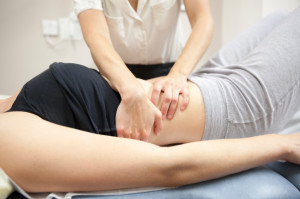
Visceral Mobilization (VM) is based on the premise that our organs, their supporting ligaments and surrounding tissues must all remain mobile for the organs to function properly and for our health to be optimal. The main purpose of visceral mobilization is to either restore or enhance the normal mobility and motion in the body’s organs after it has suffered a trauma – perhaps due to an accident, a fall or surgery.
This treatment modality focuses on locating and releasing abnormal tensions in the connective tissue that links the organs of the body to each other, the diaphragm and various other structures in the body, including boney structures. When there are abnormal tensions in these connective tissues, it can effect the physiological functioning of an organ as well as the structural integrity of the body.
Correcting these imbalances can alleviate chronic pain, digestive disturbances, elimination issues, respiratory impairments and stress, which may be responsible for disease or pain in the body. It can also enhance the mobility of your musculoskeletal system and enhance your metabolism.
Visceral Mobilization is a safe and effective for infants, children, teenagers, adults and seniors.
What to expect from Visceral Mobilization
VM is a technique that requires contact to the skin or your abdomen or thoracic (chest) cavity. You will be fully clothed and your belly will be exposed for the treatment. Some people prefer to wear gym clothes which are loose fitting and women often wear a sports bra for greater comfort. The techniques are performed with the client either sitting or lying on the massage table.
How does Visceral Mobility work?
During a session the practitioner will gently and firmly connect with and then engage the body’s organs (liver, kidneys, stomach, intestines, heart, lungs, etc.) and surrounding connective tissues. Using specific and direct techniques, the practitioner will release tensions and restrictions in the organs, the surrounding tissues and supporting ligaments. This enables the body to self-correct, restoring both mobility and better function. As a result, the organs will glide freely, work more effectively and there is better overall whole body communication.
